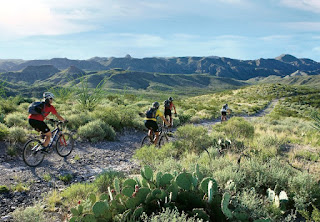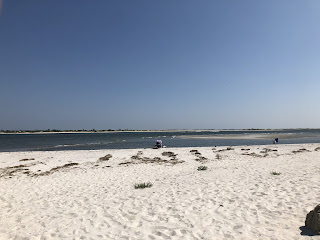Tomorrow will mark 20 years since the deadliest terror attack on US soil. During the commemorations, there will be much talk of "heroes." And that awful day produced many, some of whom didn't survive the day.
I will say more about them tomorrow. (Don't worry: The post will relate to bicycling as well as that terrible event.) Today, though, I want talk about another hero who had yet to be born on that day.
 |
| Jyoti Kumari, self-portrait |
Jyoti Kumari bought a purple bicycle for the equivalent of $20. Unlike other 15-year-olds, however, she didn't pedal it to school or work. Instead, she used it to bring her father home.
To say that was no small feat was an understatement. Mohan Paswan was a big man, carrying a big bag. A migrant worker had been injured on a job near New Delhi, about 1200 kilometers (700 miles) from his family's home. Compounding the difficulty of that situation was the lockdowns, then some of the world's strictest, that had been imposed on India. So, even if he could've worked, there was no work for him. He was stranded, broke, just as India and the world were plunging into the abyss of the COVID-19 pandemic.
Home, for him and Ms. Kumari, was a village near the Nepalese border. Their journey would take them along a route where people younger and healthier than Mohan died in the brutal heat, or were run down by trucks or trains. And there would be few places where he and Jyoti could find food or water.
Still, Kumari managed to bring her father home. She pedaled all the way back, with her father riding in back. Along the way, some locals jeered or castigated her for pedaling while her father sat. But others offered help, including the use of their cell phones so she could let her mother know she and her father were on their way.
After they arrived, she garnered a lot of media attention, from the likes of people and outlets far bigger and more famous than yours truly. The Prime Minister gave her the National Children's Award, which included a medal and about $1300. There were offers and promises of jobs, scholarships and other kinds of help. And Onkar Singh, the chairman of the Cycling Federation of India, invited her to a tryout for the national team, which could mean a trip to the 2024 Olympics in Paris.
Singh's offer still stands. Kumari, however, is more anxious to finish her studies (understandable, especially given that she comes from a lower-caste family). To do that, she would need to catch up on academic work she missed while helping to care for her father. She has been taking some lessons from a local teacher, but her village's school remains closed.
And some of the offers and promises of help were not fulfilled. So, while her family were able to build a bigger house with water and toilet connections and sustain themselves for a while, some of the money was used to pay off debts. Now "the funds are drying up," explains Mukesh Kumari Paswan, Kumari's brother-in-law. He was an X-ray technician but, like everyone else in his family, is out of work. "We don't know what to do now," he says.
As if the family weren't facing enough difficulties, her mother isn't well and minor physical activity leaves her out of breath. Worst of all, in May--one year after Kumari brought her father home--he died of cardiac arrest.
Whether or not Jyoti Kumari takes up Onkar Singh on his offer, one can only hope that the road ahead is less difficult for her and her family isn't as difficult as it's been. Any teenage girl who can pedal her father home through the conditions she endured certainly deserves better!











































